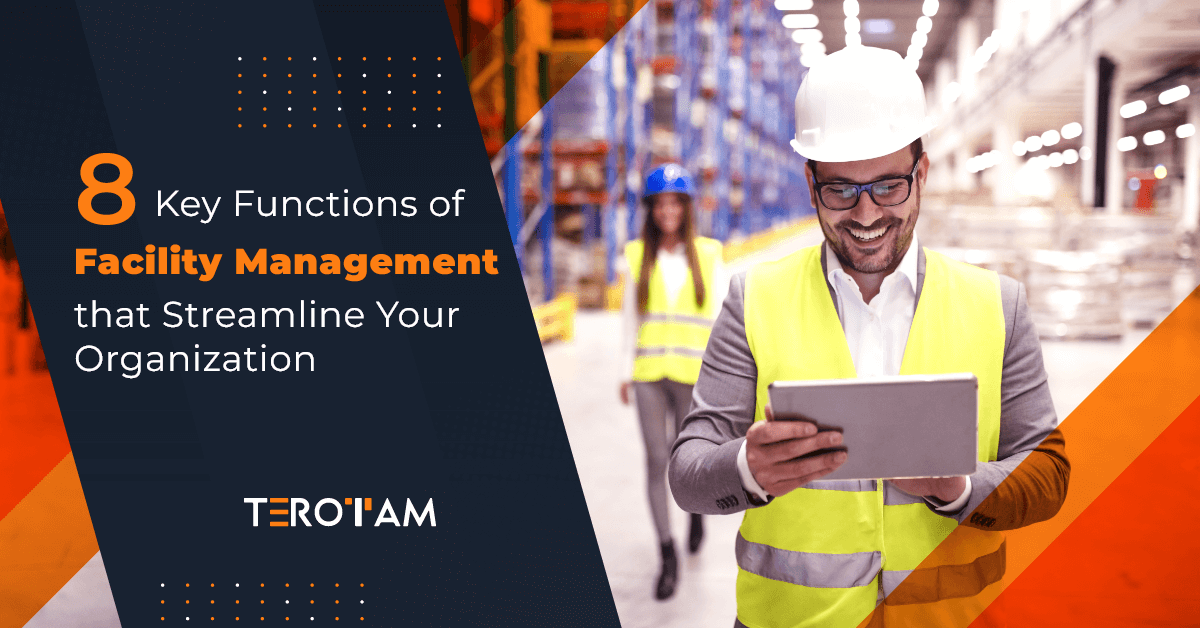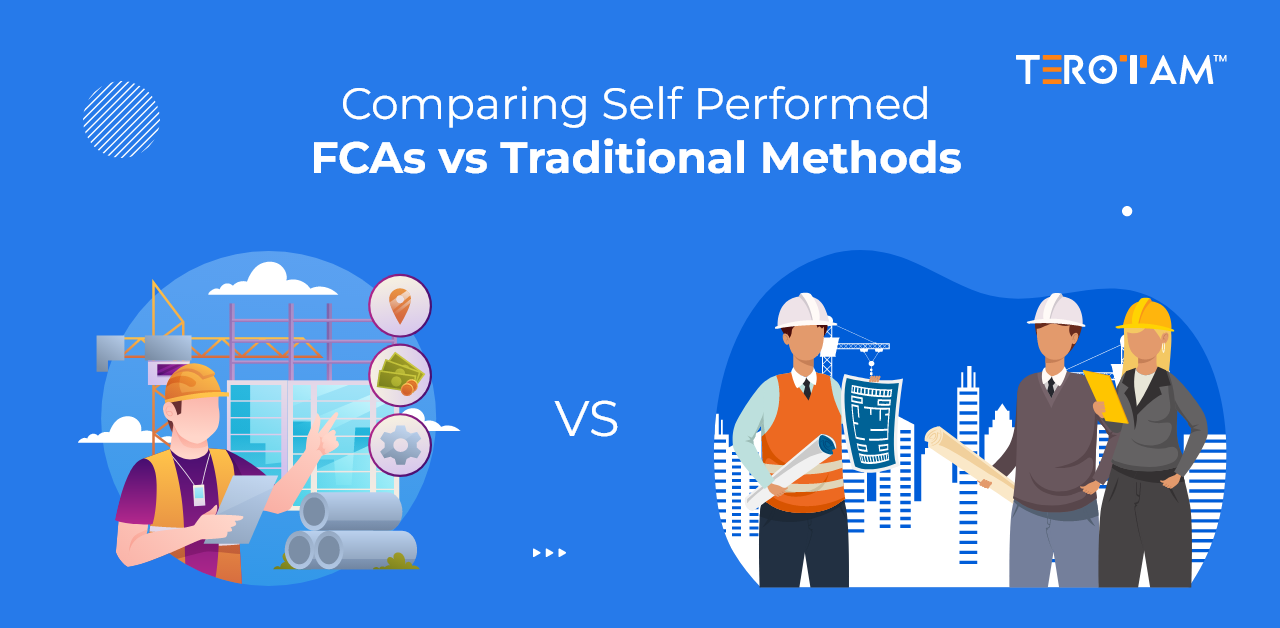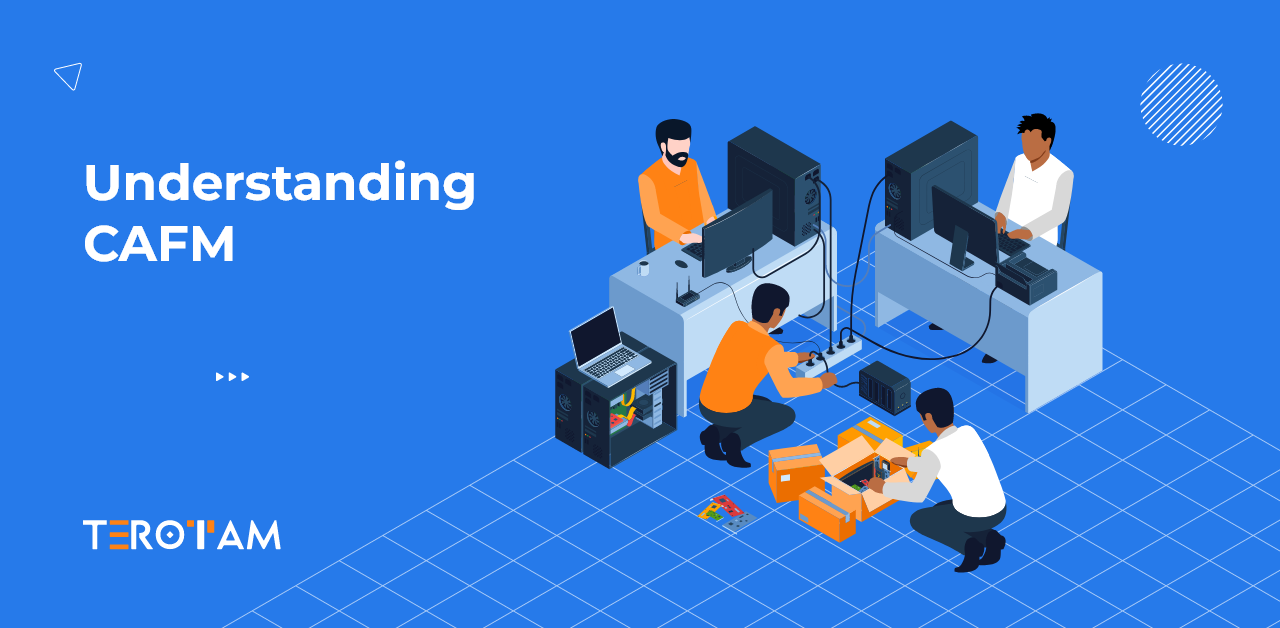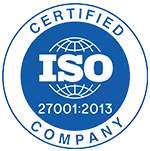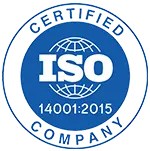Facility management in industrial and commercial setups is no longer limited to building upkeep. It is a structured discipline that aligns physical infrastructure, machinery, and support services with the operational objectives of the organization. Whether it is a manufacturing plant, a logistics hub, or a corporate office, these functions keep operations stable and safe.
Modern facilities demand an approach that looks after asset performance, space allocation, compliance, energy use, and workforce requirements. Facility management brings these elements under one system so that downtime, inefficiencies, and risks are reduced.
This article highlights the eight major functions that form the foundation of this practice, explains the practical impact of these functions, and shows how technology like CMMS is changing the way these tasks are managed.
What is facility management?
Facility management in an industrial environment is the structured coordination of physical assets, plant utilities, building systems, and supporting services to ensure that day-to-day operations run without interruptions. It goes far beyond building upkeep—it integrates engineering, safety, energy management, and resource planning into a single operational discipline. For plants and factories, this means aligning everything from production floor layouts and power distribution systems to maintenance schedules and vendor contracts so that core operations work in a stable and controlled environment.
In manufacturing units, logistics hubs, and infrastructure facilities, this function is highly technical. It involves tracking machine conditions, monitoring HVAC and compressed air systems, ensuring structural safety, and meeting compliance requirements. Facility managers work with data from multiple systems, evaluate risks, and make decisions that keep production, utilities, and auxiliary services available at all times. They bridge the gap between equipment reliability, regulatory standards, and cost efficiency.
Modern facility management also integrates technology such as IoT sensors, building management systems (BMS), and CMMS platforms to provide real-time visibility into assets and processes. This technology-driven approach helps in predictive maintenance, energy monitoring, and emergency planning, which is critical in high-capacity plants. As industrial operations scale up, the role of facility management becomes a key operational layer that directly supports productivity, safety, and long-term asset performance.
Why is facility management important for industries?
Facilities are the backbone of any industrial operation. When managed properly, they allow uninterrupted workflows and safe, efficient conditions for workers and machinery. Poorly managed facilities, on the other hand, lead to downtime, safety incidents, and higher costs.
Facility management directly impacts:
- Operational efficiency: Preventing machine breakdowns and process delays.
- Safety: Minimising accidents by controlling hazards and following compliance norms.
- Energy and resource costs: Reducing unnecessary energy consumption and waste.
- Employee productivity: Providing well-structured and safe working environments.
It is no longer an administrative function—it is part of an organisation’s strategy.
8 Key functions of facility management
Facility management combines multiple disciplines into one continuous operational cycle. Below are the eight functions that carry significant importance in industries and large-scale commercial environments.
1. Maintenance and asset management
Industrial operations depend on complex machinery, HVAC systems, conveyors, electrical panels, and building structures. Facility management ensures these assets are inspected, maintained, and recorded systematically.
- Preventive and predictive maintenance scheduling to reduce unexpected breakdowns.
- Corrective maintenance planning to limit downtime when equipment fails.
- Life cycle tracking of each asset, including installation, service history, and disposal.
- Spare parts inventory management is linked to asset maintenance.
- Performance analysis based on recorded service data and inspection logs.
2. Space and workplace planning
Space in industrial and commercial facilities must be designed to support safe movement, equipment placement, and process efficiency. Facility managers analyse and allocate spaces based on usage patterns.
- Optimising layouts for warehouses, production floors, and common areas.
- Coordinating seating and workstation setups in offices.
- Creating flexible zones that can be modified when capacity changes.
- Planning storage areas for tools, raw materials, and finished goods.
- Aligning facility layouts with emergency access and compliance norms.
3. Health, safety, and compliance
Industrial facilities are governed by strict occupational health and safety standards. Facility managers establish systems that meet these requirements.
- Conducting periodic risk assessments and hazard identification.
- Managing permits, statutory certifications, and audit schedules.
- Supervising safety equipment installations such as alarms, sprinklers, and emergency lighting.
- Ensuring adherence to fire, electrical, and building codes.
- Training staff in safe evacuation and incident response procedures.
- Preparing compliance documentation for inspections by authorities.
4. Sustainability and energy management
Energy efficiency and environmental performance are now key focus areas for industries. Facility management integrates these into operational planning.
- Tracking and analysing electricity, gas, and water consumption.
- Introducing energy-efficient machinery and lighting solutions.
- Establishing systems for recycling, waste segregation, and safe disposal.
- Setting up rainwater harvesting and resource recovery units.
- Implementing green building practices that meet sustainability standards.
5. Vendor and contract management
Specialised vendors deliver many essential facility services. Managing these partners is a structured process that ensures quality and compliance.
- Preparing service-level agreements and reviewing vendor contracts.
- Monitoring performance against timelines and compliance requirements.
- Negotiating costs while maintaining defined service standards.
- Systematically tracking contract renewals and payments.
- Coordinating communication between departments and vendors.
- Auditing vendors for quality, safety, and statutory compliance.
6. Technology and data management
Facilities today rely heavily on data to make decisions on resource usage, equipment health, and service planning. Facility managers integrate technology tools to capture and analyse data.
- Deploying CMMS, CAFM, or IoT platforms for connected monitoring.
- Capturing data on machine utilisation, maintenance costs, and downtime.
- Using dashboards and KPIs to visualize facility performance.
- Automating reporting processes for compliance and management.
- Applying analytics to forecast failures and optimise schedules.
- Integrating mobile apps for real-time task updates and approvals.
7. Business continuity and emergency response
Industrial facilities need robust plans to manage emergencies such as natural disasters, equipment failure, or security breaches. Facility management prepares response frameworks that reduce downtime.
- Designing recovery strategies to maintain operations during disruptions.
- Establishing communication protocols during an emergency.
- Planning alternate work locations or substitute processes.
- Conducting periodic mock drills for staff readiness.
- Arranging backup utilities, such as power generators and network systems.
- Ensuring critical spares and documentation are secured.
- Linking facility operations to enterprise risk management frameworks.
8. Support services and workplace experience
Support services form the day-to-day link between facility management and employees. These ensure work environments are functional and comfortable.
- Supervising housekeeping, waste disposal, and cleaning schedules.
- Managing reception, mail services, and transport coordination.
- Handling requests for furniture, fixtures, and internal movements.
- Monitoring conditions like lighting, air quality, and ergonomics.
- Collecting employee feedback to address issues quickly.
What are the challenges faced by facility managers?
Managing facilities in industrial and large commercial environments is becoming more complex as operations expand and adopt new technologies. Facility managers must deal with the pressure of keeping assets and services running without disruptions while maintaining compliance and controlling costs. The increasing use of automated systems, strict safety requirements, and the need for 24/7 availability make this responsibility both technical and time-sensitive.
In industries such as manufacturing, logistics, healthcare, and utilities, the challenge is not only to manage equipment and infrastructure but also to coordinate multiple stakeholders. With numerous sites, large numbers of assets, and a mix of outsourced and in-house teams, even small delays or missed tasks can impact productivity and safety. This calls for structured planning, transparent tracking, and fast decision-making.
Key challenges include:
- Handling a growing inventory of machines, utilities, and building systems spread across multiple locations.
- Managing preventive and predictive maintenance without affecting production schedules.
- Ensuring strict adherence to compliance, safety regulations, and audit readiness.
- Coordinating with multiple vendors, contractors, and service providers simultaneously.
- Keeping operational costs under control while improving service levels.
- Managing real-time data, reporting, and performance tracking across all facility functions.
- Responding quickly to unplanned breakdowns, natural disasters, or security incidents.
How does CMMS software help in streamlining facility management functions?
Computerised Maintenance Management Software (CMMS) has become a key enabler for effective facility management. It brings multiple processes under a single system, allowing better control and transparency.
- Centralised asset database: Stores details of every asset, its service history, and upcoming maintenance schedules.
- Automated work orders: Generate work orders automatically based on planned schedules or breakdown requests, reducing manual effort.
- Real-time monitoring: Integrates with IoT sensors to monitor equipment performance and send alerts for unusual conditions.
- Data-driven decisions: Provides detailed reports and analytics to optimise preventive maintenance, spare part usage, and service efficiency.
- Compliance tracking: Maintains records of safety checks, audits, and certifications to meet regulatory requirements.
- Mobile access: Field teams can access work orders, submit reports, and update tasks directly from mobile devices.
This digital approach ensures that all eight functions of facility management become more structured, measurable, and efficient, making it easier to meet industrial demands.
Key industries where CMMS is streamlining facility management functions
CMMS is no longer limited to manufacturing—it is now widely used across multiple sectors to simplify facility operations.
- Manufacturing plants
CMMS systems help manage hundreds of machines, plan preventive maintenance, track spare parts, and record compliance checks across the plant. - Healthcare facilities
Hospitals use CMMS to ensure uptime of critical medical equipment, manage HVAC and power systems, and maintain strict hygiene standards through scheduled service tasks. - Logistics and warehouses
Distribution centres use CMMS to manage conveyors, forklifts, refrigeration units, lighting, and space utilisation across large storage spaces. - Hospitality and commercial complexes
Hotels and large office buildings apply CMMS to schedule cleaning, manage security systems, and monitor utilities like lifts and air-conditioning. - Educational and institutional campuses
Schools and universities use CMMS to maintain large facilities, manage classroom HVAC, lighting, water systems, and safety drills. - Utilities and infrastructure
Power plants, water treatment units, and other infrastructure setups depend on CMMS for tracking the performance of pumps, turbines, pipelines, and safety systems.
Across all these industries, CMMS ensures data-driven management, reduces manual follow-ups, and provides clear accountability for every task.

Conclusion
Facility management has become a structured, data-driven function that directly affects the reliability and efficiency of industrial operations. When handled systematically, it ensures machinery and infrastructure are always in working condition, compliance requirements are met, and the workforce operates in a safe, optimized environment. With CMMS tools and structured facility management practices, companies can reduce downtime, control costs, and build more resilient operations. If you are looking to explore how technology can help streamline your facility management processes, reach out to us at contact@terotam.com.


